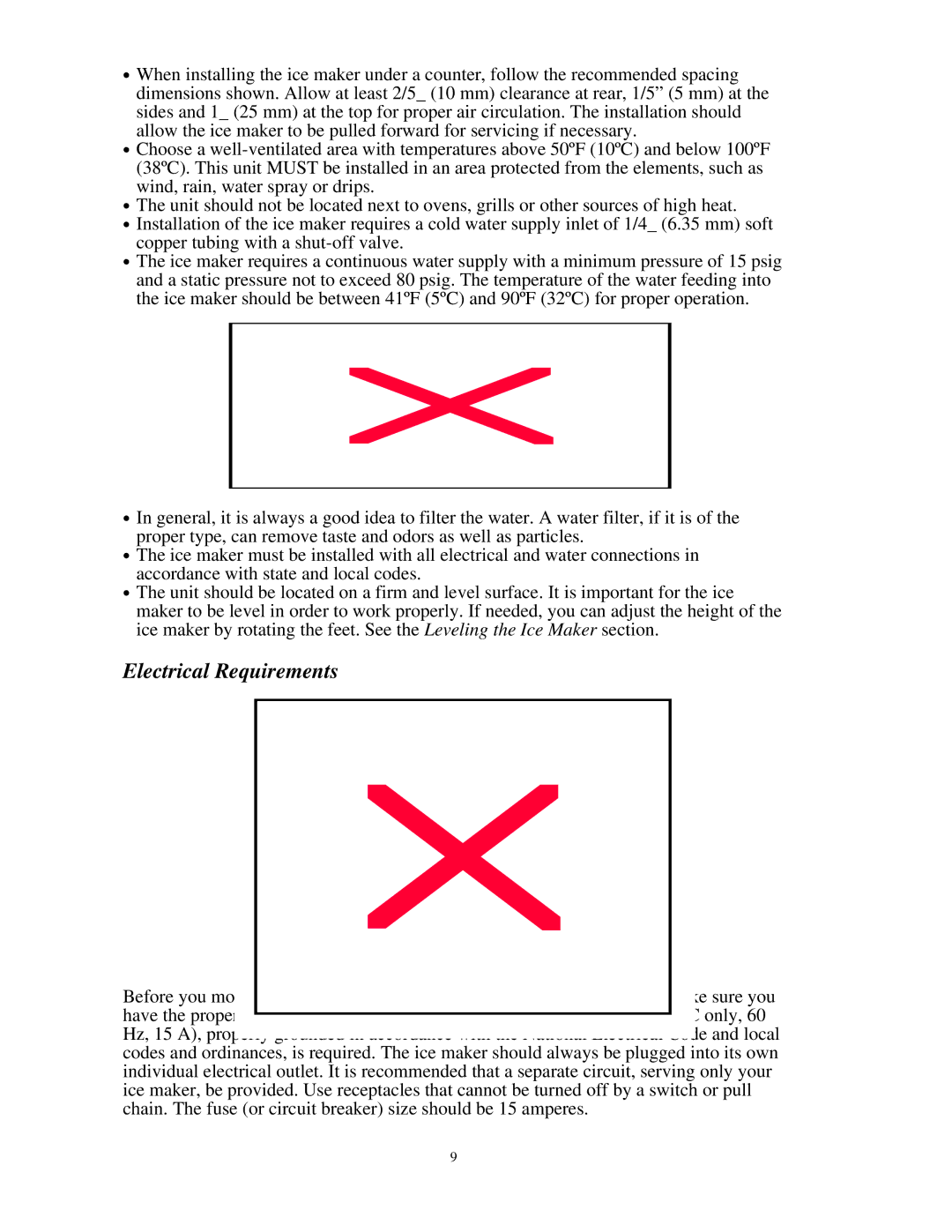
•When installing the ice maker under a counter, follow the recommended spacing dimensions shown. Allow at least 2/5_ (10 mm) clearance at rear, 1/5” (5 mm) at the sides and 1_ (25 mm) at the top for proper air circulation. The installation should allow the ice maker to be pulled forward for servicing if necessary.
•Choose a
•The unit should not be located next to ovens, grills or other sources of high heat.
•Installation of the ice maker requires a cold water supply inlet of 1/4_ (6.35 mm) soft copper tubing with a
•The ice maker requires a continuous water supply with a minimum pressure of 15 psig and a static pressure not to exceed 80 psig. The temperature of the water feeding into the ice maker should be between 41ºF (5ºC) and 90ºF (32ºC) for proper operation.
•In general, it is always a good idea to filter the water. A water filter, if it is of the proper type, can remove taste and odors as well as particles.
•The ice maker must be installed with all electrical and water connections in accordance with state and local codes.
•The unit should be located on a firm and level surface. It is important for the ice maker to be level in order to work properly. If needed, you can adjust the height of the ice maker by rotating the feet. See the Leveling the Ice Maker section.
Electrical Requirements
Before you move your ice maker into its final location, it is important to make sure you have the proper electrical connection. A standard electrical supply (115 VAC only, 60 Hz, 15 A), properly grounded in accordance with the National Electrical Code and local codes and ordinances, is required. The ice maker should always be plugged into its own individual electrical outlet. It is recommended that a separate circuit, serving only your ice maker, be provided. Use receptacles that cannot be turned off by a switch or pull chain. The fuse (or circuit breaker) size should be 15 amperes.
9
